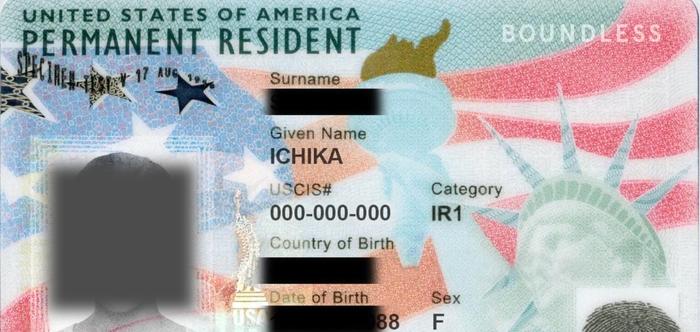The United States has long been a land of opportunity, drawing people from all corners of the world with its promise of a better life. Many come on tourist visas, eager to explore the country, but eventually find themselves contemplating a more permanent stay.
If you’re one of those dreamers wondering, how to change a Tourist Visa to a Permanent Resident in USA? you’ve come to the right place.
To change a Tourist Visa to a Permanent Resident in the USA, typically, one must secure an eligible immigrant visa, meet requirements, file an application, and go through the USCIS process. Consult an immigration attorney for personalized guidance.
In the following blog, we’ll demystify the steps involved, outline the eligibility criteria, and discuss important considerations. So, fasten your seatbelt, as we embark on a journey to uncover the path from a tourist visa to permanent residency in the USA.
What is a Permanent Resident?
A Permanent Resident in the U.S. is an individual granted authorization to live and work indefinitely within the country’s boundaries. This status is a significant step towards U.S. citizenship, but not equivalent to being a citizen. These residents hold what’s commonly referred to as a Green Card. It symbolizes their valid resident status and the rights accompanying it.
However, achieving a Permanent Residency doesn’t automatically grant all the rights of a U.S. citizen. While Permanent Residents can work, study, and pursue life in the U.S., they can’t vote in federal elections or hold certain government positions. Nonetheless, with this status, one enjoys protection under U.S. laws and regulations.
Maintaining a Permanent Residency requires adherence to specific regulations. For example, extended absences from the U.S. might jeopardize this status. Hence, it’s crucial for Permanent Residents to understand and uphold these responsibilities, ensuring they maintain their hard-earned status.
Understanding The Visa Categories
You can change your tourist visa into a permanent residency visa by understanding the various visa categories in the United States. These categories define the purpose of your stay and the legal basis for your presence in the country. Let’s delve into the key visa categories to grasp their significance.
Tourist Visas (B-1/B-2)
Tourist visas, such as B-1 (business) and B-2 (pleasure/tourism), are temporary permits that allow individuals to visit the United States for purposes such as tourism, business meetings, or participating in an international conference in America. These visas typically have fixed durations.
Immigrant Visas (Family-Based)
Immigrant visas in the family-based category are designed for close relatives of U.S. citizens and permanent residents. This category promotes family reunification by granting eligible family members the opportunity to immigrate to the United States.
Employment-Based Visas
Employment-based visas provide pathways for skilled workers, investors, and individuals with exceptional abilities to obtain permanent residency in the USA. The specific requirements and processes vary depending on the type of employment-based visa.
Diversity Visa (DV) Lottery
The Diversity Visa (DV) Lottery program offers a unique opportunity for individuals from countries with historically low rates of immigration to the United States. Winners of the DV Lottery receive immigrant visas, leading to permanent residency.
Special Immigrant Visas (SIVs)
Special Immigrant Visas (SIVs) are designated for specific groups, including Iraqi and Afghan nationals who provided assistance to the U.S. government, religious workers, and other categories. These visas recognize unique contributions to the United States.
Humanitarian Visas
Humanitarian visas encompass refugee and asylum statuses. They provide refuge to individuals facing persecution, violence, or other dire circumstances in their home countries. The United States extends a compassionate hand to those in need through these visas.
With a clearer understanding of these visa categories, you can take the first step toward choosing the most suitable path for your permanent residency journey in the USA. Each category presents its own opportunities and challenges, and we’ll explore them further in this guide.
How to Change a Tourist Visa to a Permanent Resident in USA?
It can be challenging to visit the immigration system in the United States. However, it’s not impossible. If you’re seeking to transition from a tourist visa to permanent residency, follow this step-by-step guide to streamline the process.
Step-1. Determine Your Eligibility
Before initiating any application, ascertain your eligibility. Criteria often include family ties, employment prospects, or asylum reasons. There are several avenues like marriage to a U.S. citizen or an employment offer that could bolster your eligibility. Understand the specific conditions that apply to your situation.
Step-2. Secure an Eligible Immigrant Visa
This is crucial. Having an immigrant visa signifies an intention to reside permanently. Tourist visas are non-immigrant, so transitioning requires a change. Research categories that best align with your circumstances.
Step-3. File the I-485 Application
The I-485 is your Application to Register Permanent Residence. Ensure you complete it meticulously. Accurate documentation speeds up processing times and reduces the chances of setbacks. This form, once approved, changes your status from a non-immigrant to an immigrant, laying the foundation for Permanent Residency.
Step-4. Undergo a Medical Examination
The U.S. requires health evaluations for intending immigrants. Find a USCIS-approved physician for the checkup. This ensures you meet health requirements and aren’t carrying communicable diseases.
Step-5. Attend the Scheduled Interview
Upon processing your I-485, USCIS will schedule an interview. Prepare all essential documents and practice potential questions. Honesty and consistency in responses are paramount during this step.
Step-6. Await the USCIS Decision
After the interview, USCIS will deliberate on your application. This can take several months depending on the category and the number of applications they’re processing. Patience is essential, and checking your application status online can provide peace of mind. Remember, approval times can vary widely based on several factors.
Step-7. Address Any Request for Evidence (RFE)
Sometimes, USCIS might need more information. If you receive an RFE, respond promptly. It’s imperative to address these inquiries comprehensively, as they highlight areas of your application that might be lacking. Providing the requested evidence timely ensures your application remains active and under consideration.
Step-8. Secure and Maintain Your Permanent Residency
Upon approval, you’ll receive your Green Card. Celebrate, but also acquaint yourself with the nuances of holding this status. Travel restrictions, renewals, and staying out of legal trouble are crucial aspects of maintaining this status. Staying informed and vigilant ensures you avoid unnecessary complications and maintain your new residency rights.
Taking on this journey requires diligence, patience, and a commitment to detail. Remember, each case can be unique, so always consider seeking guidance from an immigration attorney for personalized advice.
Common Obstacles In Transitioning To Permanent Residency
Permanent Residency in the U.S. is a dream for many, but various hurdles can make the journey challenging. From policy nuances to personal circumstances, applicants often face obstacles. Here are some common challenges distilled into key points:
- Ineligibility Issues: Eligibility criteria for Permanent Residency are stringent. Not meeting even one can derail the application. It’s imperative to understand and fulfill these prerequisites fully.
- Documentation Delays: Proper documentation is the backbone of the application process. Missing or incorrect documents can lead to significant setbacks. Always double-check and update records as required.
- Extended Processing Times: USCIS can sometimes take months to process applications. This extended wait can cause anxiety and uncertainty. Being patient and periodically checking your status is crucial.
- Medical Examination Complications: Medical checks can uncover health concerns. These might lead to visa denials or further checks. It’s wise to undergo preliminary check-ups before the mandated exam.
- Financial Constraints: The application process involves various fees. Lack of funds or financial mismanagement can halt progress. Planning and saving ahead are essential for a smooth process.
- Interview Missteps: The interview phase is vital and can be tricky. Unpreparedness or inconsistency in answers can raise red flags. Preparing thoroughly and practicing potential questions can mitigate risks.
- Requests for Additional Evidence: Receiving an RFE can be daunting. It highlights potential concerns in your application that need addressing. Timely and accurate responses are key to moving forward.
- Overstaying Tourist Visas: Overstaying can have severe repercussions, making transitions challenging. It can lead to bans or complex legal situations. Ensuring you abide by visa durations is paramount.
Having a clear understanding of these challenges is the first step towards effectively navigating them. With preparation and perseverance, many of these obstacles can be managed or avoided altogether.
Benefits of Transitioning To Permanent Residency in the USA
Transitioning to Permanent Residency in the USA opens doors to numerous opportunities and privileges. This status not only offers a more stable life but also brings a range of benefits. Let’s explore some of the prominent advantages:
Extended Stay Rights
Permanent Residents aren’t confined by visa expiration dates. They can live, work, and study in the U.S. indefinitely. This stability fosters personal growth and eliminates the worry of visa renewals. Residency offers the comfort of long-term planning without immigration-related disruptions.
Employment Opportunities
With a Green Card, job opportunities widen significantly. Many employers prefer Permanent Residents over visa holders due to fewer restrictions. This advantage often results in career progression, better salaries, and the chance to explore varied industries with ease.
Access to Education
Permanent Residents have broader access to the U.S. education system. They’re eligible for in-state tuition, scholarships, and financial aid in many institutions. This can significantly reduce education costs, allowing students to explore diverse courses and institutions without financial constraints.
Family Reunification
Green Card holders can petition to bring certain family members to the U.S. This facilitates reuniting with close relatives and spouses. Being together in the same country strengthens familial ties, offering emotional support and shared experiences.
Social Benefits
Permanent Residency provides access to several social benefits unavailable to temporary visa holders. These residents are eligible for Social Security, Medicare, and certain welfare programs after meeting specific criteria. Such benefits provide a safety net, ensuring better health and financial security in times of need.
Path to Citizenship
Holding a Green Card is a significant step toward U.S. citizenship. After a few years and meeting specific residency requirements, one can apply for naturalization. Achieving citizenship allows individuals to participate fully in the democratic process, including voting in federal elections, and accessing an even broader range of benefits.
Achieving a Permanent Residency in the U.S. offers more than just extended stay rights. It’s an enhancement in both personal and professional life, bridging the gap to realizing the quintessential American Dream, with a plethora of tangible and intangible benefits.
Conclusion
The journey of changing one’s status from a tourist visa to permanent residency in the U.S. is more than just a procedural endeavor. It’s a significant life decision, filled with both opportunities and challenges. How to change a Tourist Visa to a Permanent Resident in USA? is a common question, reflecting the aspirations of many who have experienced the country’s allure and now wish to call it home.
Gaining permanent residency provides access to a wide range of advantages, including better educational and employment prospects. Even though the benefits are alluring, you must be ready for any obstacles that may arise. Even while qualifying requirements, paperwork, and legal complexities can appear overwhelming, they can be managed with the correct guidance.
In essence, transitioning from a tourist status to permanent residency is a transformative step. With patience, persistence, and the right information, this dream can become a reality, laying the foundation for a promising future in the U.S.








